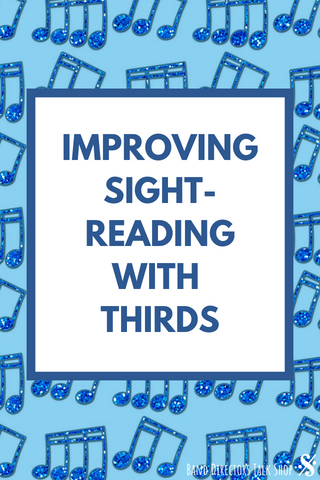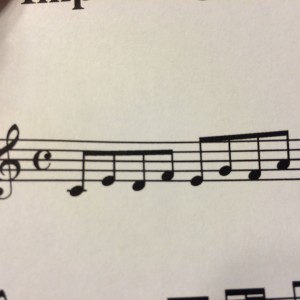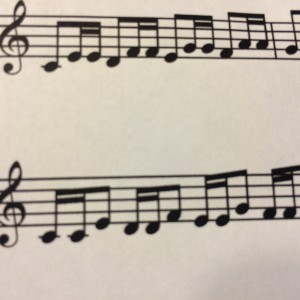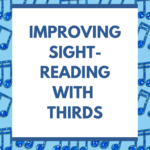Thirds patterns are an excellent way to bridge the gap between playing scales and sightreading within a specific key. Here’s a way to change up the monotony of playing straight through a page of thirds. To keep it easy, teach these patterns by rote – just tell the kids to double the note. (see below)

Play straight through the thirds as written in eighth notes.
Tell the students to “double the higher note” and count it for them and demonstrate on your instrument.
Tell the students to “double the lower note” and count it for them and demonstrate on your instrument.
Tell the students to “double every note.” Count and demonstrate again.
After they get the hang of it, don’t stop in between variation. Play through one key signature like this:
Then 4 beats later go to the next key and do it the same way. This is also a great tonguing exercise as well as a way to increase endurance. You can have them play different styles as another way to change it up.
Just to clarify – the students do not ever see this copy with all the different rhythms. They only see the top line. The variations is taught by rote and the students look at the eighth note line while doubling the various notes to make the patterns.
Try these thirds patterns with your band and let us know if their sightreading abilities (and technique/articulation) improve throughout the year. Please share this to Facebook or Twitter if you have colleagues that would benefit from a new idea.
If you want to spice it up and make it more exciting, try playing Band Drop out – the post is here… Drop Out Contest
Related Reading:
It All Comes Down to Communication
Selecting Music for Your Band – Guidelines
If you would like to receive our weekly newsletter, sign up here.
Don’t forget to like us on Facebook too!










[…] Related Reading: Reach Higher (A Tim Lautzenheiser Activity) Improving Sightreading, Endurance and Tonguing with Thirds […]